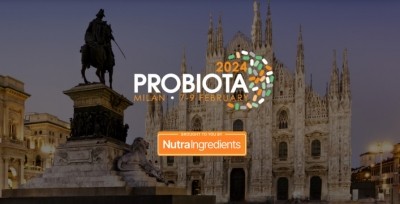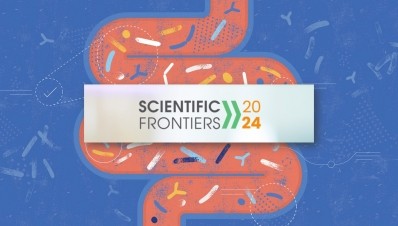Insights from Probiota 2023
VIDEO: New discoveries and opportunities in HMO supplementation
This was the key message from a presentation provided by Lars Bode, Professor at University of California, San Diego, Director of the Human Milk Institute, and Director of the Mother-Milk-Infant Center of Research Excellence.
He told delegates that HMOs are the third most abundant component of human breastmilk, after lactose and lipids. They are well known to act as prebiotics, feeding good gut bacteria to promote microbiome health.
He explained these are made with five building blocks and how these blocks are put together impacts the 'job', or health benefit, of the HMO. There are more than 150 known structures and the top 10 most abundant HMOs make up to over 70% of total HMO concentration.
The top five most researched and manufactured are LNT, 2’-Fl, 3-FL, 3’-SL, and 6’SL (Fucosylated, sialyated and acetylated) with a strong scientific backing for health benefits including digestive, cognitive, intestinal permeability and immune health.
He explained the HMO named 2’FL (2-fucosyllactose) is the most abundant, in most women’s breast milk and the most abundantly added to infant formula in industry.
However, different mothers will produce these to different degrees - non-secretors’ breastmilk contains next to no 2’FL, while secretors do. This is heavily impacted by environment meaning, as Bode explained: "In some parts of the world most people are secretors and other areas most are non-secretors...
"Importantly, it is known that from one month to the next, HMO composition in breastmilk changes quite significantly."
But it is not yet known exactly why mothers produce different HMOs within their milk, whether it’s mostly genetic, or whether it can be impacted through lifestyle.
Bode said those in the industry are questioning how these different compositions impact infant health and how they can mimic that change in composition over time to best serve infant health.
Anti-microbial and anti-adhesive activity
But HMOs don't only feed beneficial bacteria - they also have an anti-microbial and anti-adhesive properties, meaning they stop pathogens from holding onto intestinal commensal cells, Bode explained.
Some HMOs mimic some epithelial cell receptors and immune cell modulators, meaning the pathogens bind to the HMOs instead of epithelial cells and immune cell modulators.
Bode noted that HMOs also get absorbed intact into the circulation and might have effects all over the body but its unknown what other effects they can have in this way.
Necrotizing enterocolitis
Combined data from in vitro tissue culture models, in vivo preclinical studies in animal models, as well human mother-infant cohort studies, show that preterm infants who receive human milk instead of formula are 6- to 10-times less likely to develop necrotizing enterocolitis (NEC), one of the most common and devastating intestinal disorders in very-low-birth-weight infants.
Science also supports the hypothesis that the human milk oligosaccharides (HMOs) DSLNT is the key contributing factor in reducing NEC. Findings also suggest that it may be that DSLNT is best able to protect against NEC when it is not used to feed probiotics - when it is spared so that it can administer other health benefits as it passes lower in the digestive system.
HMOs in the older adult
Looking at the adult, Bode revealed the science indicates that the HMO 3-sialyllactose (3’SL) can have an impact on macrophage mechanised health issues including frailty, cardiovascular disease and Alzheimer’s.
Studies reveal 3’SL attenuates inflammation by a transcriptional mechanism so inflammation is switched off faster, which could help prevent arthritis and cardiovascular disease.
Looking to the future
But there are still many unanswered questions in this space. For example, scientists are also still working to understand how certain HMOs interact with certain probiotic strains in an aim to understand how they can develop effective synbiotics.
Speaking to NutraIngredients Europe Editor Nikki Hancocks, Bode said there is much research into how the composition can be changed and how specific oligosaccharides provide different health benefits.
“It’s a great time to be in this field right now… What I do see [happening in the next decade or so] is more oligosaccharides becoming available and using those oligosaccharides, not just in products, but also looking at what they do on a deeper mechanistic level and understand what’s their full potential. That will lead to the development of more targeting products.”














